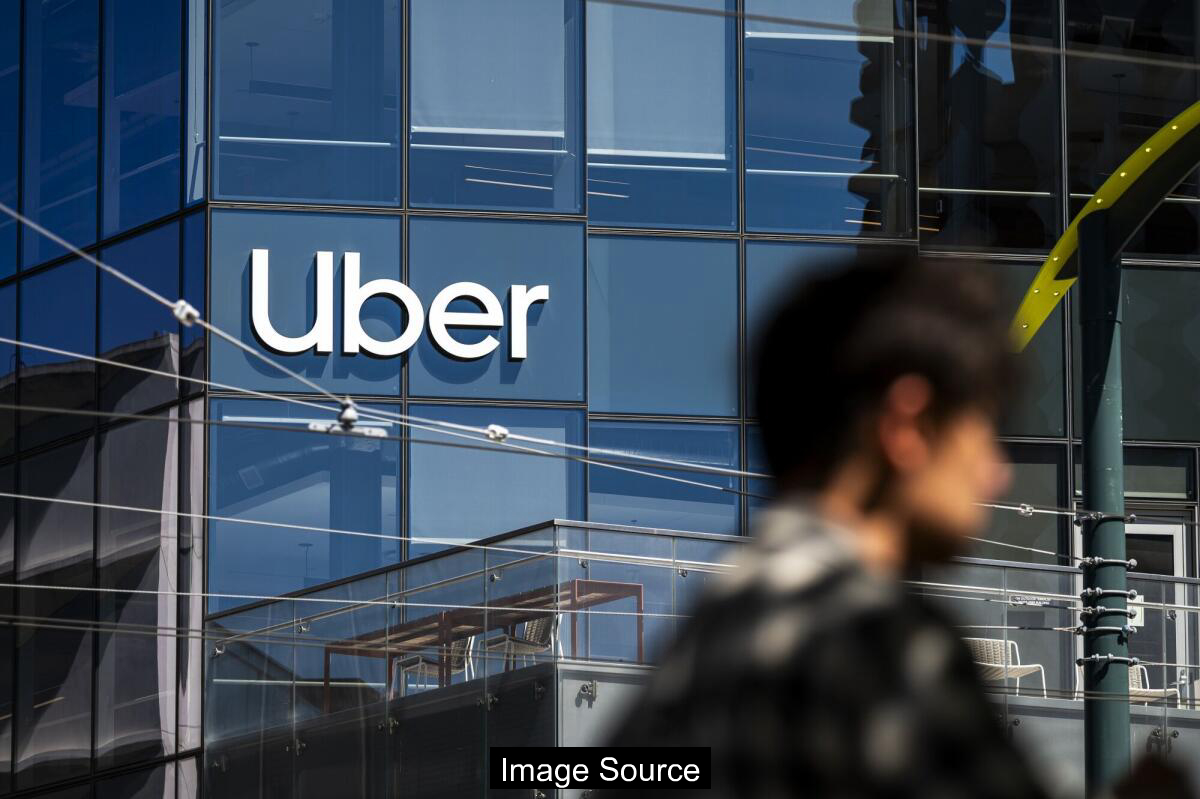Ride-hailing giant Uber reported mixed financial results in its latest quarterly earnings, with booking revenues surpassing analyst expectations despite a decline in total ride volumes. The company’s performance reflects ongoing challenges in the transportation services market, including shifting consumer behaviors and continued recovery from pandemic-era disruptions.

Uber’s Q2 Financial Performance Overview
Uber Technologies Inc. reported its second-quarter financial results, revealing a mixed performance across its core business segments. Total gross bookings reached $46.8 billion, surpassing analysts’ expectations. However, the rideshare division experienced slight underperformance, with bookings of $23.8 billion compared to projected estimates of $23.9 billion.
The company’s stock experienced a modest decline of up to 3.5% following the earnings announcement. Despite this short-term market reaction, Uber’s stock remains robust, having increased 47% year-to-date and outperforming the Standard and Poor’s 500 Index.
Chief Executive Officer Dara Khosrowshahi emphasized the company’s confidence by announcing new share buybacks totaling $20 billion. The remaining authorization stands at $3 billion, signaling continued strategic investment in the company’s future growth.
Delivery and Expansion Strategies
Uber’s food-delivery business emerged as a significant growth driver during the quarter. The segment saw increased user engagement across multiple markets, including the United States, Australia, Canada, and Mexico. The company also highlighted an expansion of grocery and retail merchant partnerships.
The acquisition of Turkish delivery app Trendyol Go at the quarter’s end represents another strategic move to enhance international market presence. Cross-selling between rideshare and delivery services continues to be a key strength, with 12% of delivery bookings generated through the Uber rideshare app.
Uber One, the company’s membership program, demonstrated substantial growth with subscriber numbers jumping approximately 60% year-over-year. These members now generate 40% of total gross bookings, underscoring the program’s strategic importance.
Internationally, Uber is focusing on expanding beyond major European cities and exploring new markets through taxi partnerships. This approach comes in anticipation of increased competition, particularly after Lyft’s entry into European markets through its Freenow app acquisition.
Autonomous Vehicle Ambitions
Uber is actively pursuing autonomous vehicle technology through strategic partnerships and investments. The company has established 20 autonomous partnerships across ride-hailing, delivery, and freight businesses, including offering Waymo robotaxis in Phoenix, Austin, and Atlanta.
The company’s approach involves carefully assessing revenue potential and developing a scalable strategy for autonomous fleets. Khosrowshahi emphasized the goal of understanding per-day revenue generation to attract third-party financing and scale autonomous operations.
Potential investments may extend to real estate, facilities, and vehicles within the autonomous ecosystem. A recent partnership with Lucid Group Inc. exemplifies this strategy of building operational experience and generating credible data for potential financial partners.
Uber continues to diversify its rideshare offerings to meet evolving consumer needs. The company has introduced more trip types and implemented strategies to improve affordability in the U.S. market. In May, they launched cheaper pooled rides and a monthly ride pass allowing commuters to lock in prices on frequently traveled routes.
Moderating insurance costs have contributed to less aggressive price increases, potentially making ridesharing more attractive to consumers. The company’s multi-pronged approach aims to balance service quality, user experience, and competitive pricing.
These innovations reflect Uber’s commitment to maintaining market relevance and addressing changing transportation preferences in an increasingly dynamic mobility landscape.
Investor FAQ
Q1. What are Uber’s financial projections for the upcoming quarter?
A1. Uber forecasts gross bookings between $48.25 billion and $49.75 billion for the next quarter, which exceeds Wall Street’s projection of $47.6 billion. The company also anticipates adjusted EBITDA ranging from $2.19 billion to $2.29 billion.
Q2. How is Uber approaching autonomous vehicle technology?
A2. Uber is strategically developing autonomous vehicle capabilities through multiple partnerships, focusing on understanding revenue potential and attracting third-party financing. The company has established 20 autonomous partnerships and is actively exploring investment opportunities in the ecosystem.
Strategic Outlook
Uber’s current strategy emphasizes diversification, technological innovation, and strategic expansion. The company’s performance demonstrates resilience across multiple business segments, with particular strength in delivery services and emerging technologies.
The focus on autonomous vehicles, enhanced membership programs, and international market expansion suggests a forward-looking approach. By continuously adapting to market dynamics and consumer preferences, Uber is positioning itself for sustained growth.
Investors and industry observers will likely continue monitoring the company’s progress in autonomous technology, international expansion, and its ability to maintain competitive advantages in rapidly evolving transportation and delivery markets.
※ This article summarizes publicly available reporting and is provided for general information only. It is not legal, medical, or investment advice. Please consult a qualified professional for decisions.
Source: latimes.com